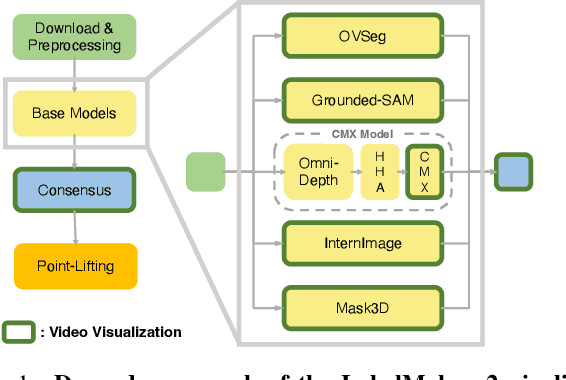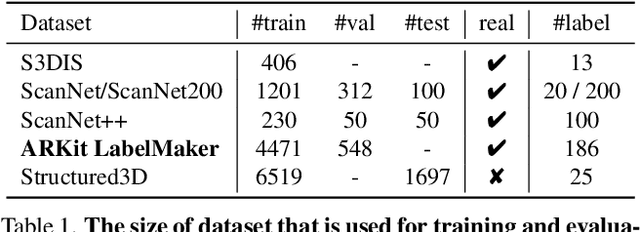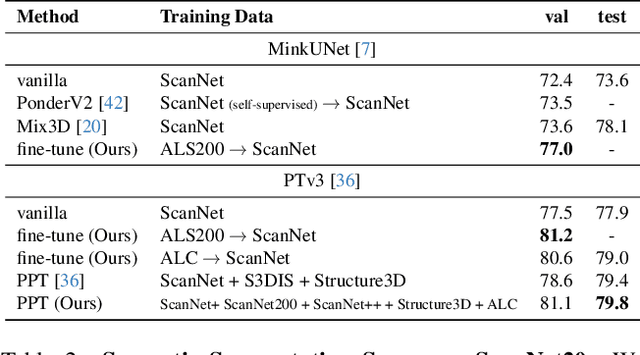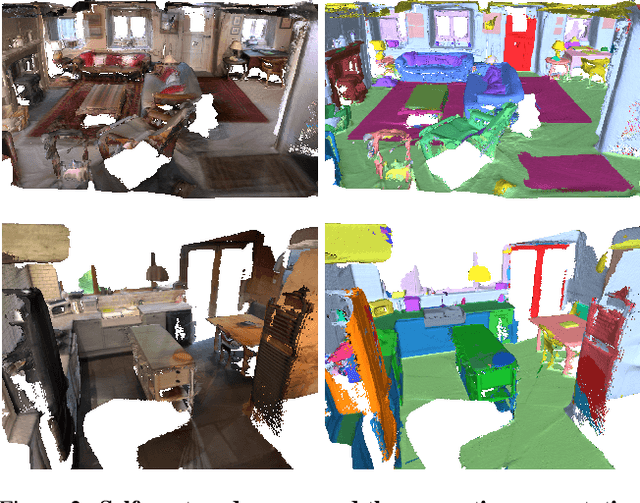Guangda Ji
ARKit LabelMaker: A New Scale for Indoor 3D Scene Understanding
Oct 17, 2024



Abstract:The performance of neural networks scales with both their size and the amount of data they have been trained on. This is shown in both language and image generation. However, this requires scaling-friendly network architectures as well as large-scale datasets. Even though scaling-friendly architectures like transformers have emerged for 3D vision tasks, the GPT-moment of 3D vision remains distant due to the lack of training data. In this paper, we introduce ARKit LabelMaker, the first large-scale, real-world 3D dataset with dense semantic annotations. Specifically, we complement ARKitScenes dataset with dense semantic annotations that are automatically generated at scale. To this end, we extend LabelMaker, a recent automatic annotation pipeline, to serve the needs of large-scale pre-training. This involves extending the pipeline with cutting-edge segmentation models as well as making it robust to the challenges of large-scale processing. Further, we push forward the state-of-the-art performance on ScanNet and ScanNet200 dataset with prevalent 3D semantic segmentation models, demonstrating the efficacy of our generated dataset.
Knowledge Distillation in Wide Neural Networks: Risk Bound, Data Efficiency and Imperfect Teacher
Oct 20, 2020



Abstract:Knowledge distillation is a strategy of training a student network with guide of the soft output from a teacher network. It has been a successful method of model compression and knowledge transfer. However, currently knowledge distillation lacks a convincing theoretical understanding. On the other hand, recent finding on neural tangent kernel enables us to approximate a wide neural network with a linear model of the network's random features. In this paper, we theoretically analyze the knowledge distillation of a wide neural network. First we provide a transfer risk bound for the linearized model of the network. Then we propose a metric of the task's training difficulty, called data inefficiency. Based on this metric, we show that for a perfect teacher, a high ratio of teacher's soft labels can be beneficial. Finally, for the case of imperfect teacher, we find that hard labels can correct teacher's wrong prediction, which explains the practice of mixing hard and soft labels.
 Add to Chrome
Add to Chrome Add to Firefox
Add to Firefox Add to Edge
Add to Edge